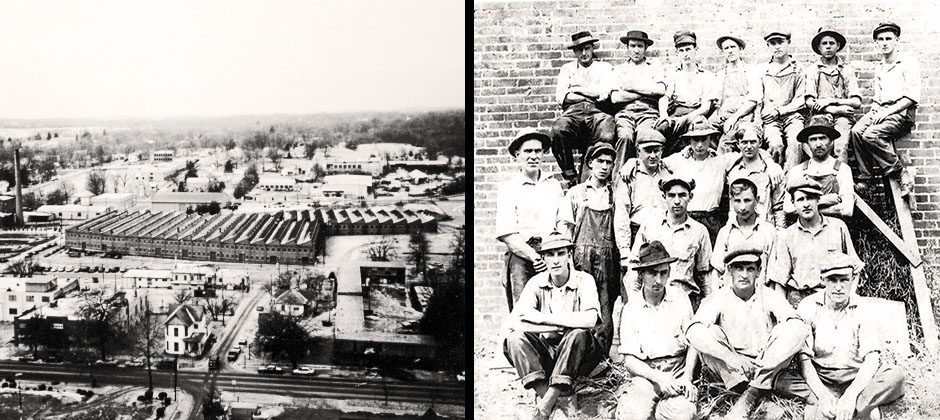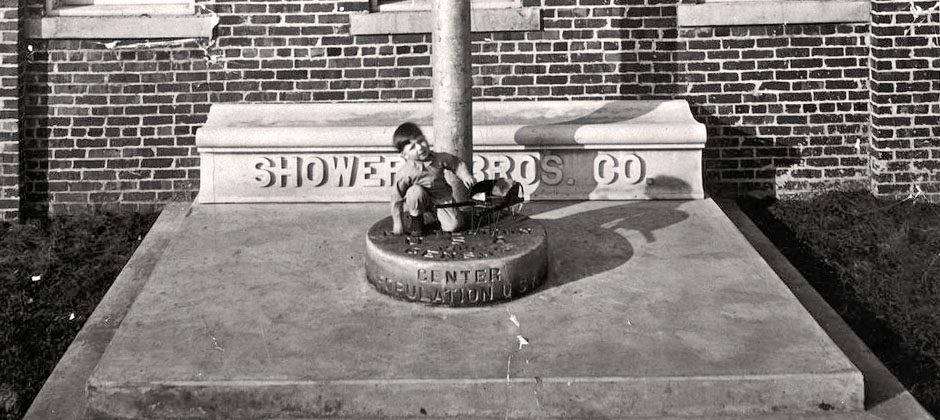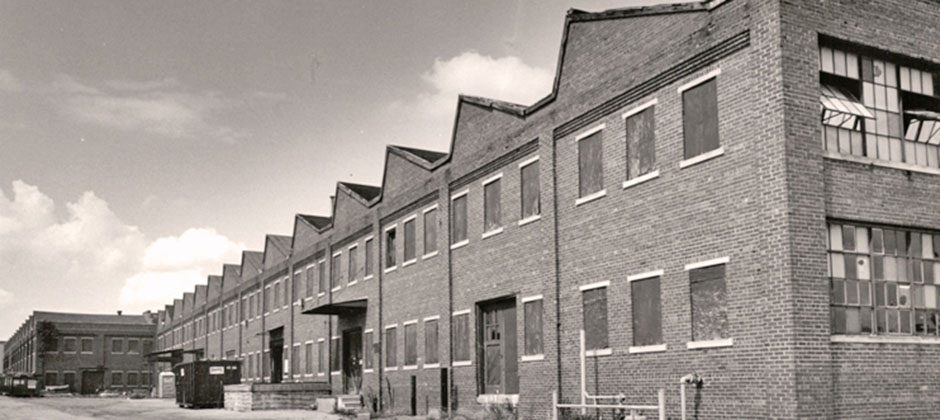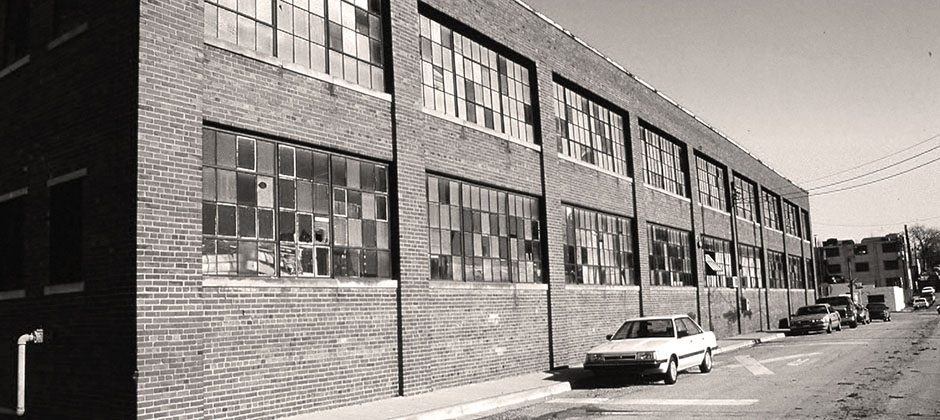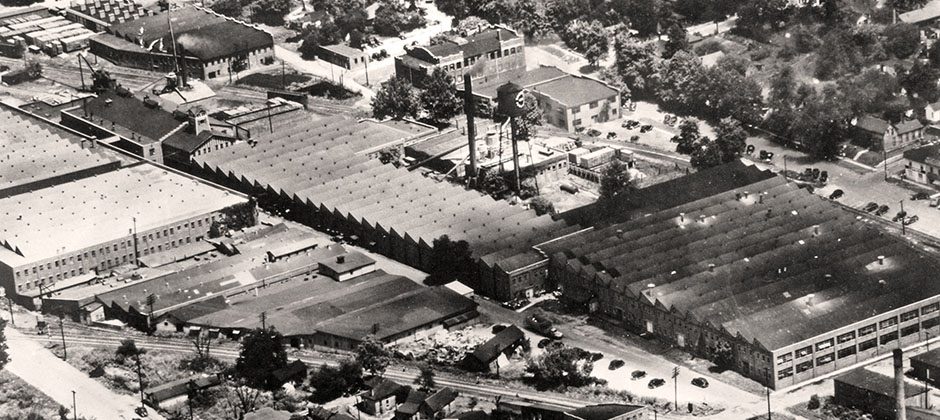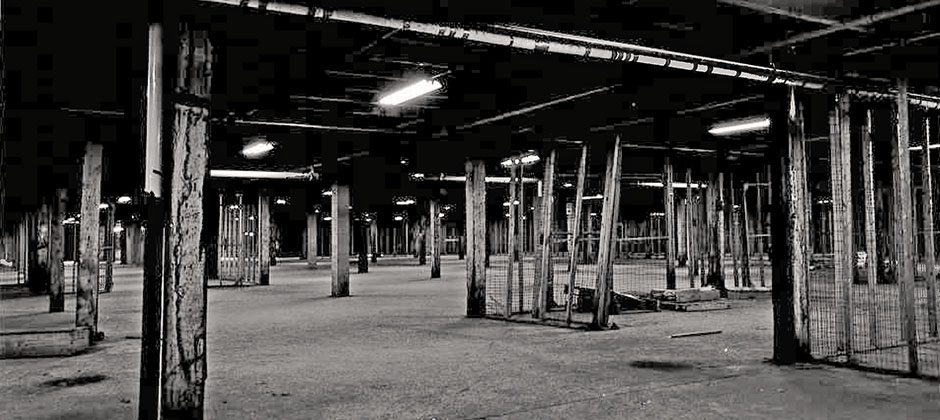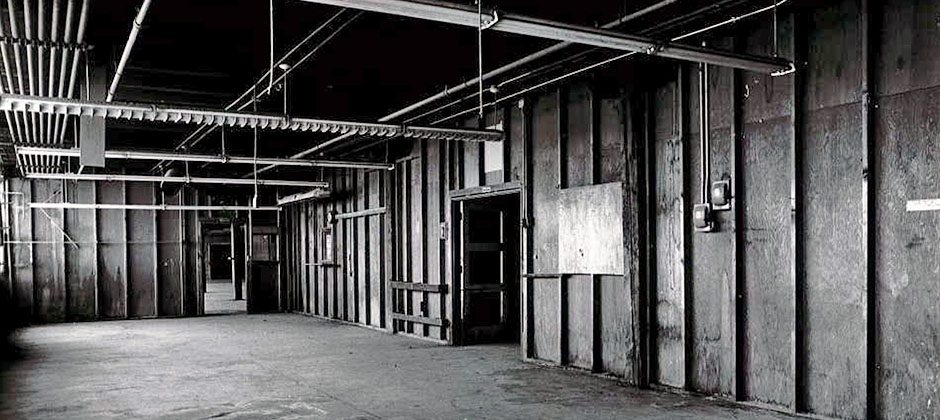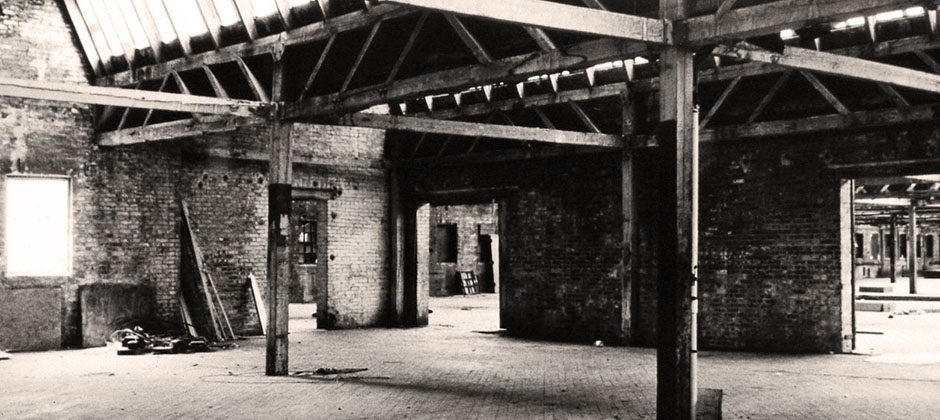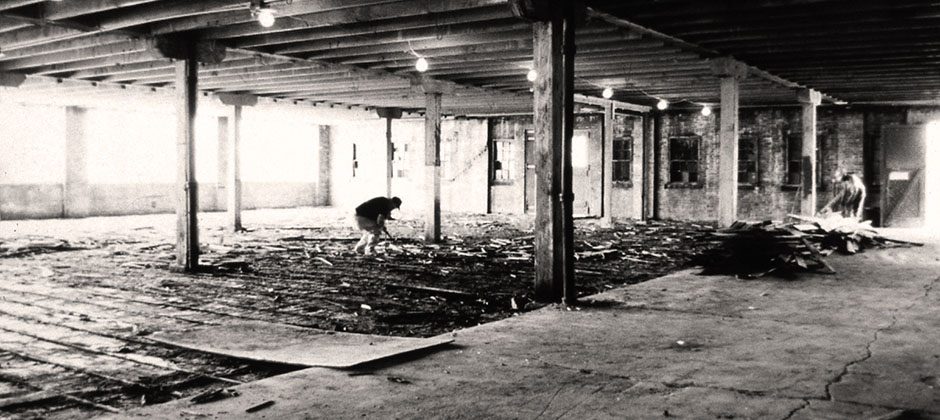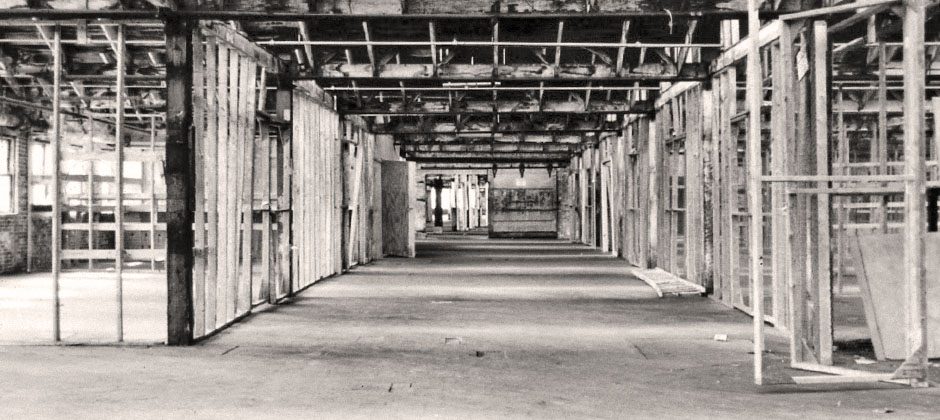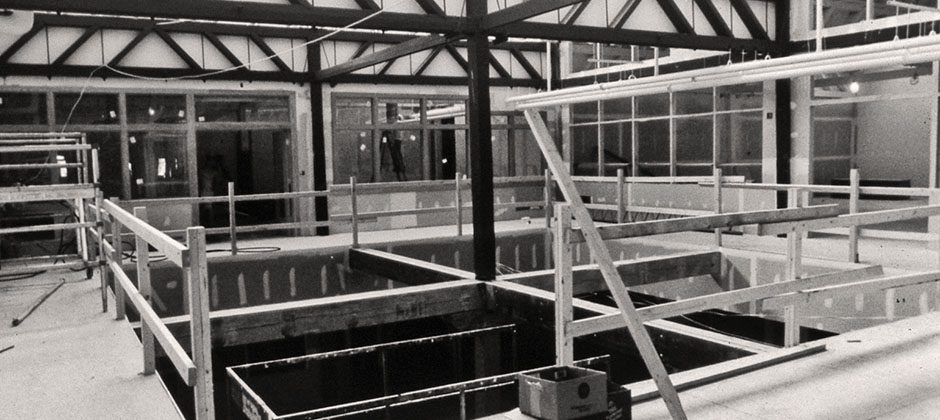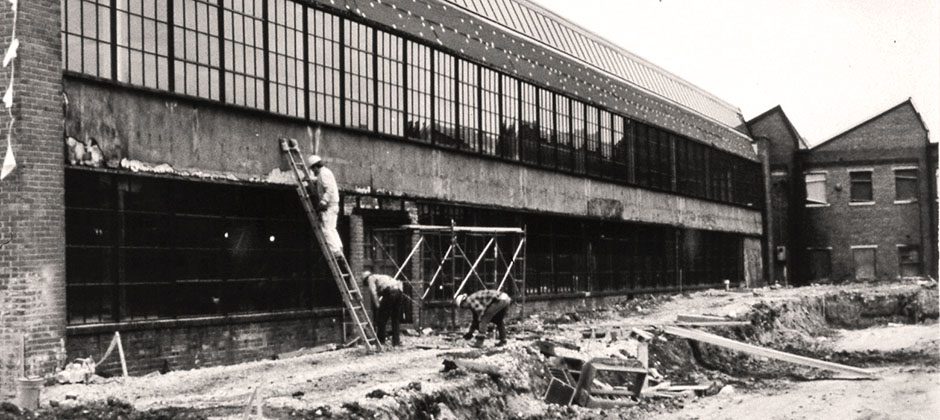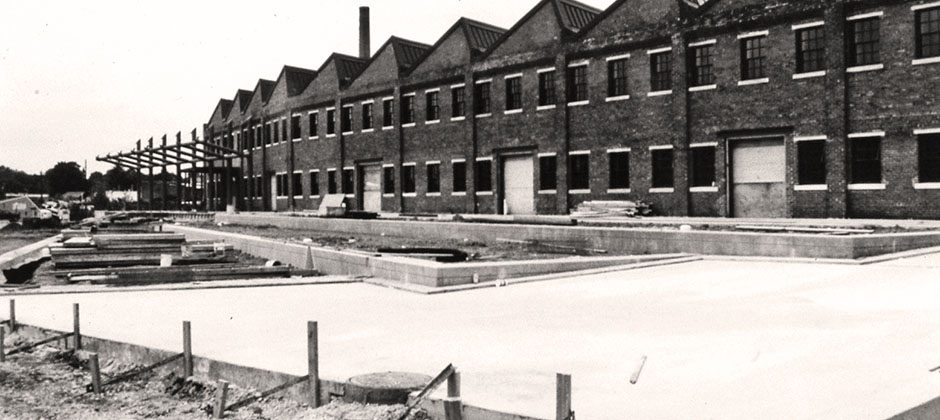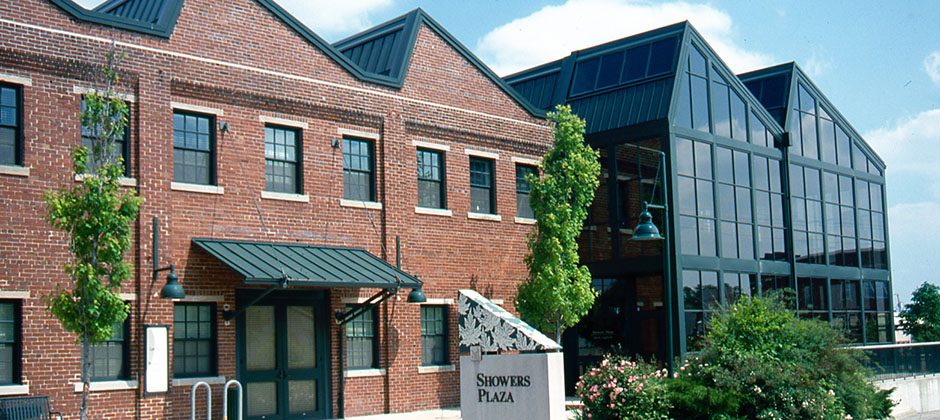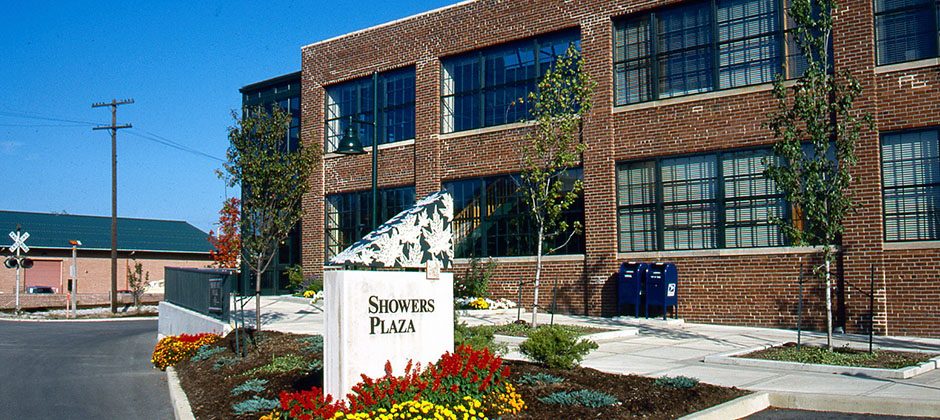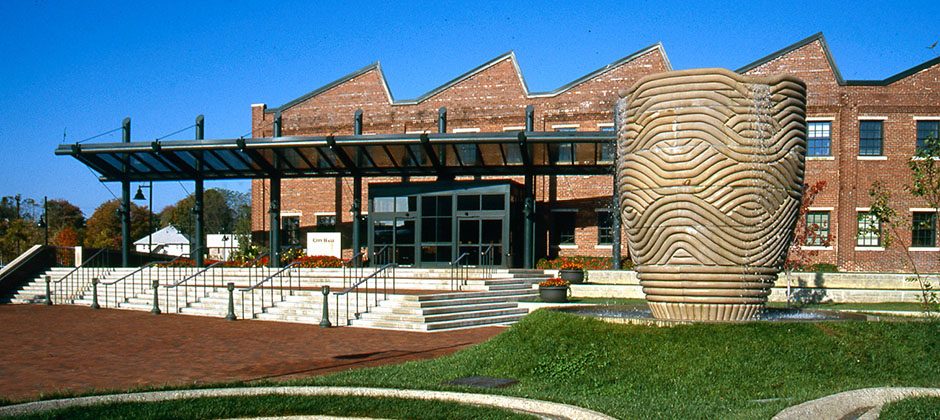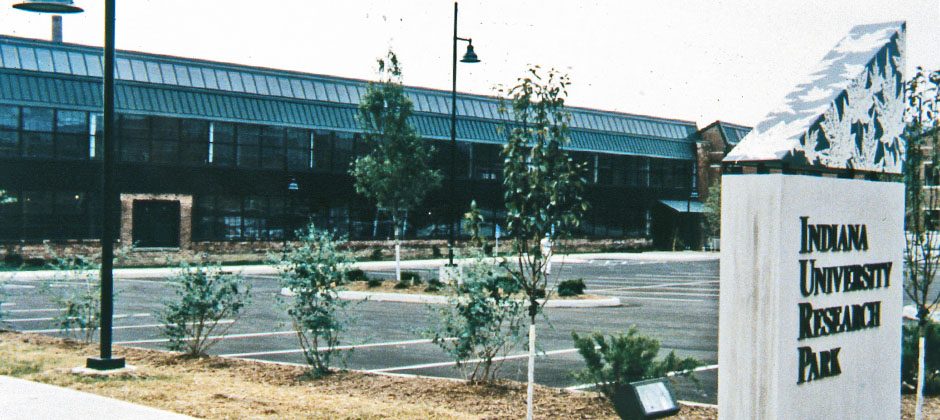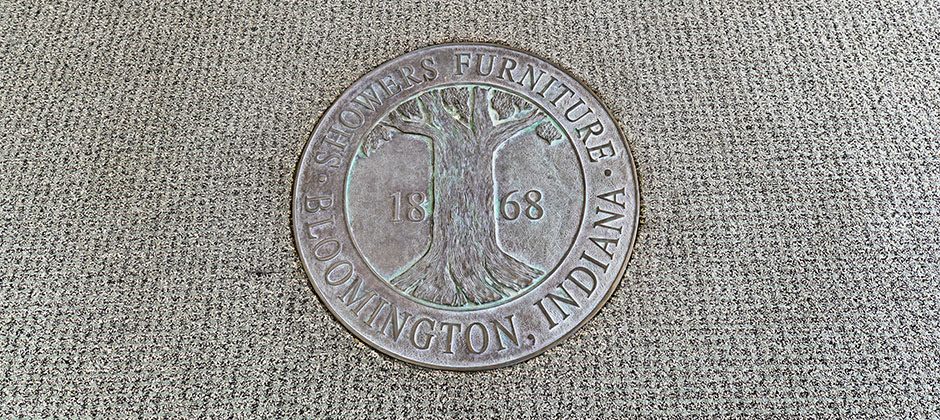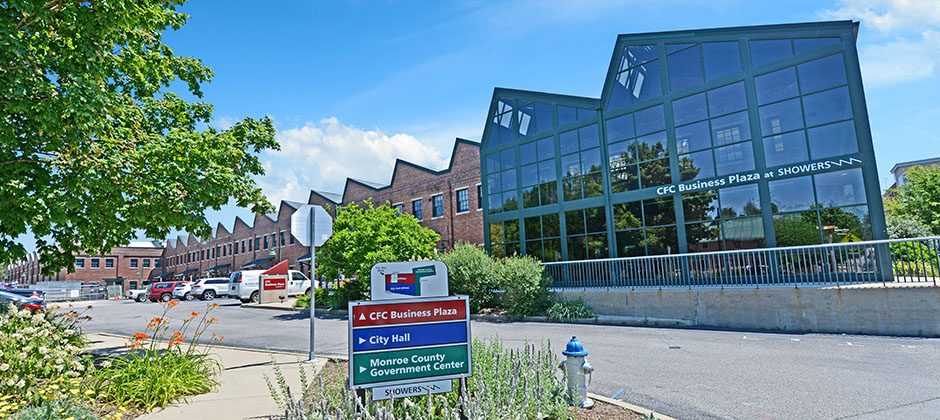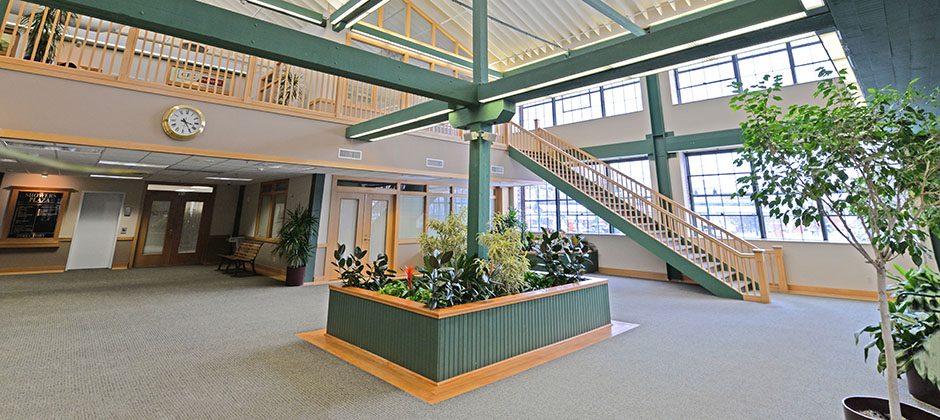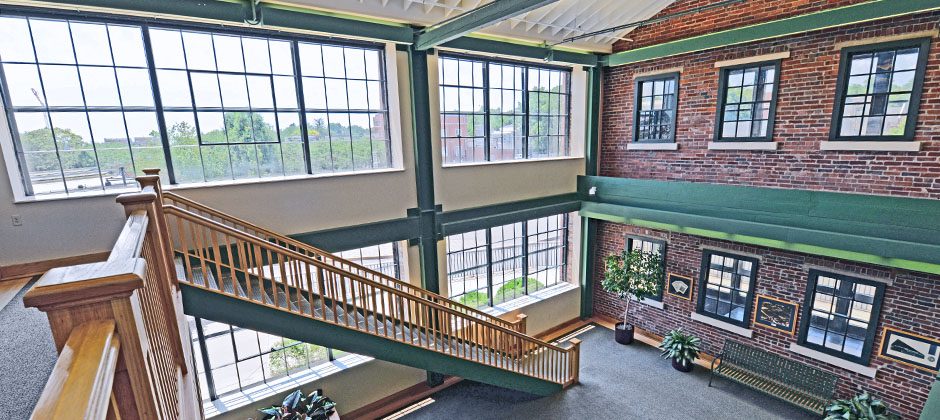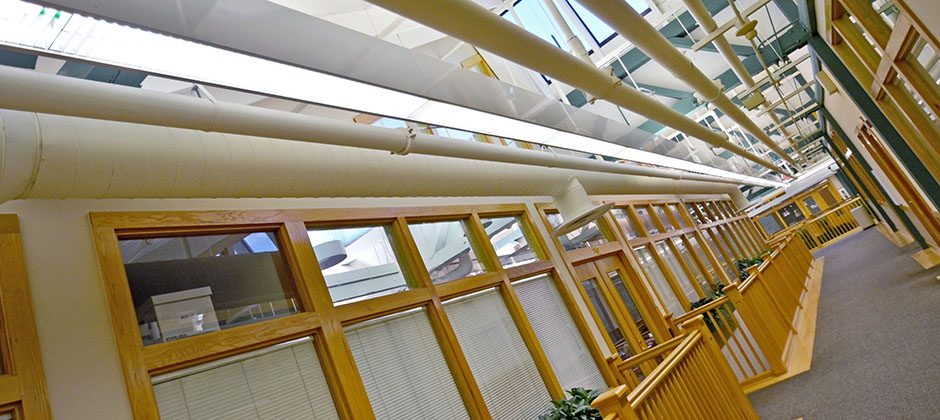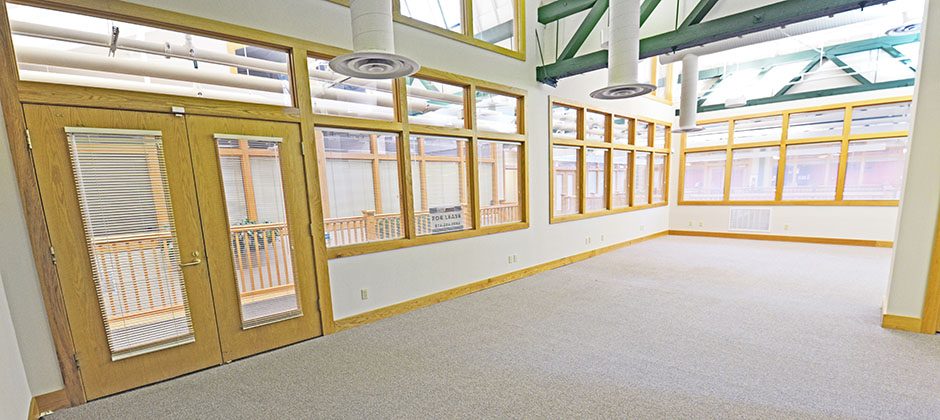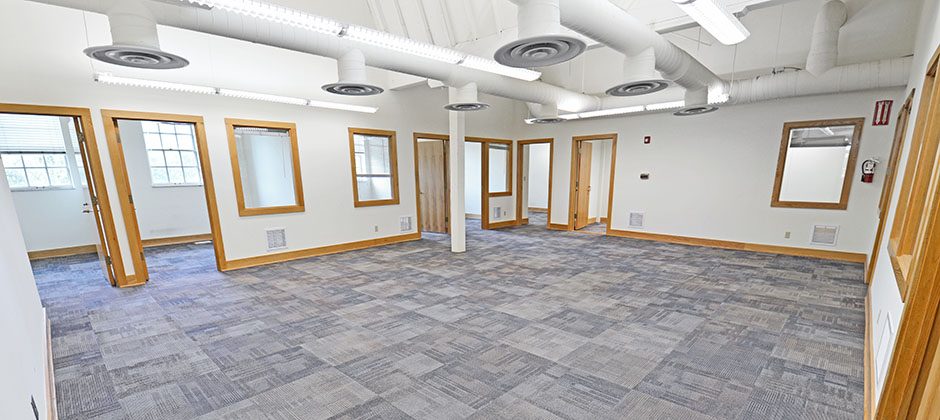Charles C. Showers, a Pennsylvania cabinet maker, is said to have lived in 15 different places and seven states before landing in Bloomington, Indiana. Charles founded the Showers Brothers Company in 1854. He first opened a shop on the square’s east side (later occupied by Wiles Drug Store). Charles’ three sons, James, William, and Charles Hull (aka Hullie), bought out the business and moved it between 8th and 9th Streets which became the first factory.
The factory thrived through the 1880s until an unfortunate fire burned it down. The Showers brothers purchased the lots on Morton Street, close to the railroad tracks, and built three separate buildings in case of a fire. Before the business was near the tracks, goods had to be hauled by wagons to the railroad.
In 1891 the Showers factories were among the first Bloomington businesses to use electricity. The Showers Brothers Company was also responsible for developing lamination.
The surviving sawtooth building design arose in 1910. During the same time, the U.S. census determined that the front door of the new main plant building was the exact center of the U.S. population.
At one time, the Showers Brothers Company rivaled the limestone industry as the major employer in Monroe County. At its peak in the 1920s, the factory employed about 2,500 people and shipped 16 railroad cars of furniture daily from the plant. Less than half a century after buying the business from their father, the Showers brothers developed “The Largest Furniture Factory in the World.” During this reign, 60% of all furniture manufactured in the United States came from the Showers Brothers Company. The company’s efficiency and innovative technology contributed to its success.
When The Great Depression hit, trucking became the cheapest transportation mode, and the company downsized. They remained the industry’s leader until the 1940s when they could no longer compete for employees with the southern quarry mills and the neighboring RCA. By 1952, the company was sold to Storkline Furniture Corporation, located in Chicago.
After a gradual decline in business, the company finally closed in 1956, and the buildings were sold to Indiana University. Eleven years later, a massive fire destroyed most of the Showers factory complex. Plant Number One survived, which the university used for storage.
In 1994 the Bloomington Advancement Corporation, a non-profit group, was formed to help promote economic development. Indiana University, the City of Bloomington, and CFC Properties partnered to renovate the surviving structure to provide research and office space.
Jim Murphy, President of CFC Properties, recalled walking with Bill Cook, Steve Ferguson, George Ridgway, Greg Blum, and Bill Thompson across the cold, dreary area before the renovation and recalled thinking…
“Someday, this will all be different.”
The groundbreaking ceremony took place in July of 1994, and by November 1995, the renovation of the Showers Business Plaza was complete. Lloyd Olcott, President of the Bloomington Advancement Corporation, referred to it as…
“The miracle on Morton Street.”
During the renovation, steel columns and other structural augmentations occurred to meet code requirements. Heat for the building was initially provided by overhead piping along the low areas of the saw-toothed roof. The old heating system was replaced with a water-source heat pump system with heating and cooling capabilities. Double-height light courts were also added to provide natural light to the first floor. In addition, the building was ventilated and appropriately insulated to provide quality fresh air and to meet energy standards.
CFC Properties received the 1995 Indiana Association of Cities and Towns Larry A. Conrad Civic Service Award for its year of contribution to the City of Bloomington and its restoration efforts toward the project.
In 1997, the building was listed as a part of Bloomington’s West Side Historic District on the National Register of Historic Places. The Showers Building was also listed in the publication “City of Bloomington: Indiana Historic Site and Structures Inventory“ as an ‘outstanding’ example of historic architecture. The building represents the 19th-century American factory engineering genre. It was designed, built, and equipped by the Chicago engineer C.H. Ballew and was considered an achievement in engineering design and management at the time of its construction.
Indiana University sold its portion of the building (on the north end) to Monroe County Government to be used for offices in 2010.
By 2016, the area surrounding the Showers Business Plaza equally evolved, attracting many new businesses, apartments, paved roads, development of the B-line Trail, manicured landscapes, street lamps, entertainment events, and more. All of which continue to drive the thriving economic scene.
CFC Properties sold its portion of the building to the City of Bloomington in 2023.

